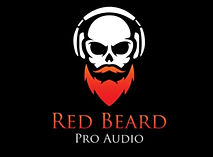The AEA R84
The R84 from AEA Microphones was designed to be flexible and practical in a myriad of recording settings. It delivers exceptional headroom while maintaining an intimate performance quality with smooth highs and extended lows. These aspects, combined with the reduced proximity effect, make the R84 incredibly well suited for both close-up and ambient mic applications. It’s just as versatile as an R44, flattering voice, strings, brass and drums alike.
The R84 was designed to be flexible and practical in a myriad of recording settings. It delivers exceptional headroom while maintaining an intimate performance quality with smooth highs and extended lows. These aspects, combined with the reduced proximity effect, make the R84 incredibly well suited for both close-up and ambient mic applications. It’s just as versatile as an R44, flattering voice, strings, brass and drums alike.The AEA R84 uses a 2.35" by 0.185" by 2-micron pure aluminum low-tension (16.5Hz) ribbon element, just like the classic R44. Many ribbon mic manufacturers choose shorter ribbons that are easier to install, but AEA’s Large Ribbon Geometry design offers important advantages. Ribbon microphones operate linearly above their resonant frequency, unlike condenser or moving coil transducers, so the resonant frequency of a good microphone design should be as low as possible. The longer the ribbon, the lower the resonant frequency will be. The ribbon has to move twice as far for every drop in octave as it vibrates within the magnetic gap, thus, a longer ribbon will allow for further movement back and forth. This results in the ribbon handling louder sound sources and more sound pressure level.
In 1976, when General Electric bought RCA and closed down its microphone division, AEA began servicing RCA’s legendary ribbon mics. Twenty-two years later, AEA reissued the iconic 44 ribbon mic and has continued to make ribbon microphones in the RCA tradition to this day. From the R84 Workshorse, R92 Up-Close Passive, Stereo R88 and Supercardioid KU4—there is a AEA Legacy microphone for every application and setting.
The Features
- Same Big Ribbon, tuning and transformer as the R44 series
- Classic look, but with milder proximity effect than the R44
- Intimate performance quality with smooth highs and extended lows
- Easy to use and more affordable
- Versatile for close-up and ambient mic applications
- 100% handcrafted in Pasadena, CA
The Specs
Pattern
- Bidirectional (Figure-of-8)
Frequency
- 20 Hz to 20 kHz
Principle
- Pressure gradient microphone
SPL
- 165+ dBSPL (1% third harmonic > 1 kHz)
Sensitivity
- 2.5 mV/Pa (-52 dBv/Pa) into unloaded circuit
Impedance
- 270 Ω nominal
Recommended Impedance
- 1.2 kΩ or greater
Power
- NA/Passive
Polarity
- Pin 2 high for positive pressure on front of microphone.
Connector
- XLR-3M wired to a 3 m captive cable
Limited Warranty
- One year parts and labor, shipping not included. Three year extended warranty if the product is registered.
The AEA RPQ500
Get all the clean gain you could ever need for the quietest mic sources with the AEA RPQ500. This mono, single-slot module offers both mic and line input modes allowing it to be used not only as a pristine mic pre, but also as an EQ and fader unit during mixdown.
Between the 12-position mic pre gain and the continuously variable output level, up to 81 dB of JFET gain is available. Three LEDs are provided for clear indication of levels at -20, 0, and +24 dBu. Use the CurveShaper EQ to finesse the high-band character at the frequency of your choosing, between 2.5 and 30 kHz. Tame bass buildup and proximity effect at the twist of a knob with the low-cut filter, which features -20 dB of maximum reduction and variable frequency selection from 22 to 515 Hz.
The Controls
- LED Indicators: Green, yellow, and red LEDs indicate levels at -20, 0, and +24 dBu
- Curve Gain: This continuously variable control adjusts the HF gain from flat (+0 dB) to maximum (approximately +20 dB); the slope of the CurveShaper EQ varies as Curve frequency and gain settings interact
- Curve Freq: This continuously variable control adjusts the +3 dB break-frequency from 2.5 to 30 kHz
- HF Switch: Out is true bypass; In inserts the CurveShaper circuitry
- LF Switch: Out is bypass; In inserts the -20 dB low-cut shelving filter
- Low Freq Cut: This continuously variable control adjusts the -3 dB break frequency of the filter from 22 to 515 Hz; maximum LF reduction is -20 dB
- P48 Switch: Out is off; In applies full-spec P48 phantom power to the input (indicated by the red LED near the switch)
- Mic/Line Switch: Out is Mic Input mode; In is Line Input mode (green LED on), which bypasses the mic preamp stage to accommodate line-level signals
- Polarity Switch: Out is normal; In is inverted
- Mic Gain: This 12-position switch selects from +13 to +62 dB of preamplifier gain
- Output Level: This continuously variable control provides up to +19 dB additional output gain in Mic Input Mode (following the optional CurveShaper circuitry); it acts as a fader and allows -60 dB attenuation of the output signal (0 dB unity is one tick below +6 dB)
The RPQ 500 Features
- One channel with 81 dB of sweet and quiet JFET gain
- High-frequency CurveShaper EQ and low-frequency proximity control
- Mic and line inputs for mixdown EQ versatility
- Switchable phantom power, polarity, and mic/line input mode
- NoLoad 10-kilohm high-impedance circuitry providing better overall transients, frequency response, and higher output sensitivity
- Made in the USA
top of page
$1,898.00Price
bottom of page

.jpg)

